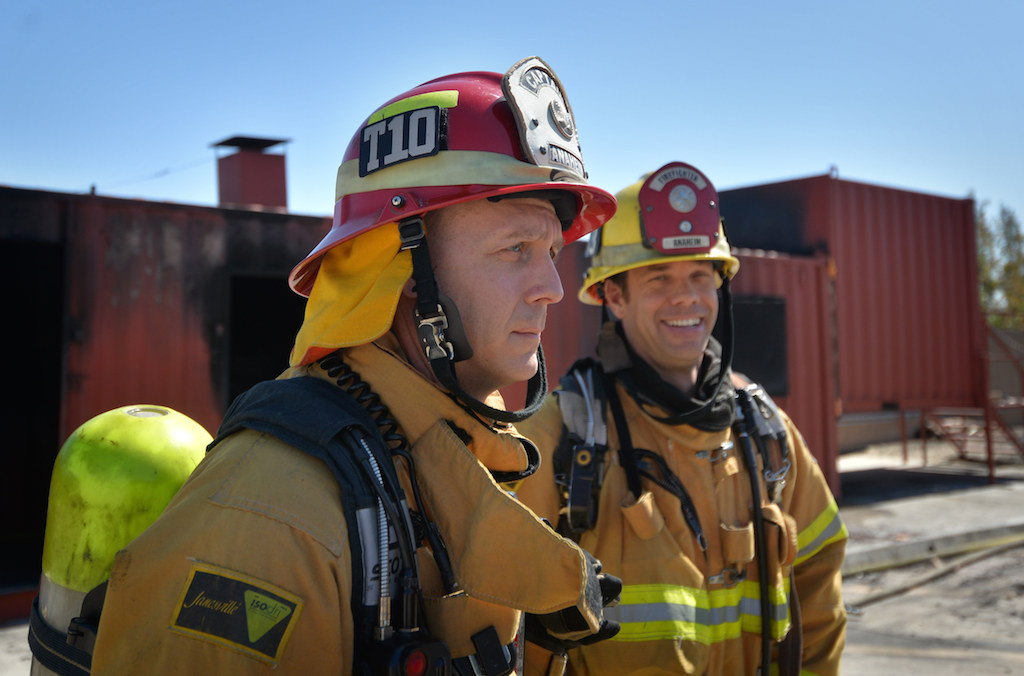The monster in the shipping container roars.
Standing outside the corrugated-steel container nicknamed “The Can,” used by Anaheim Fire & Rescue and other agencies for live-fire training, Battalion Chief Tim Adams opens a small panel.
In rushes oxygen.
Out rushes billowing black smoke that quickly ignites into angry orange flames.
The fire inside The Can would kill a person within seconds.
Yet huddled inside, only a dozen feet from the inferno, are a half-dozen AF&R firefighters wearing protective turnouts, other gear and breathing masks.
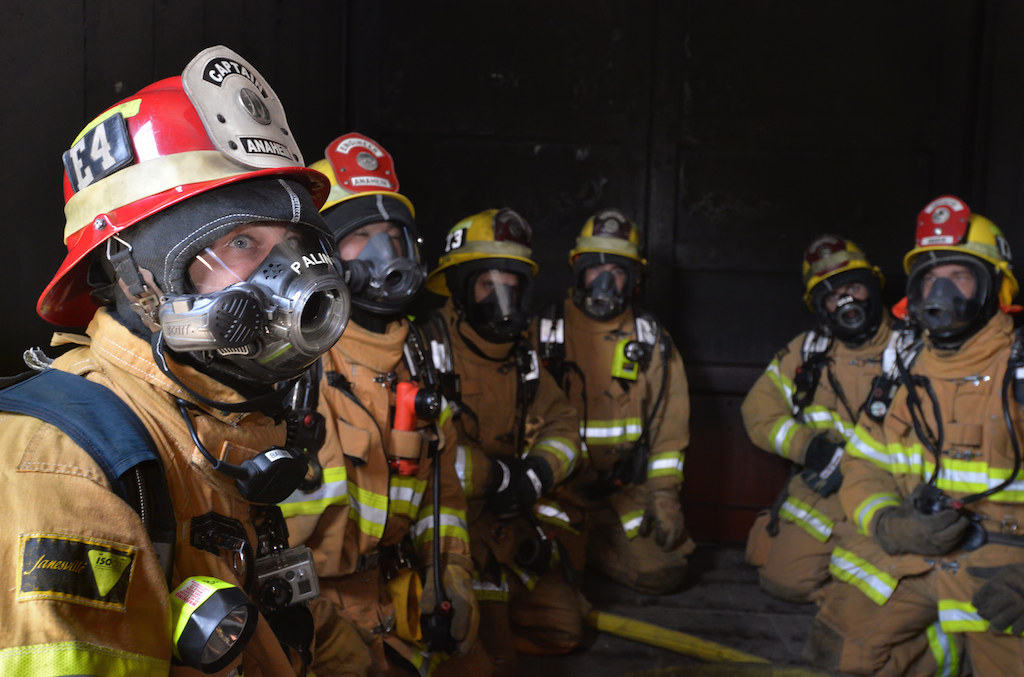
Capt. Justin Balint, left, sits with firefighters from Anaheim Fire & Rescue inside a converted shipping container whose temperature reached around 190 degrees where they were sitting and more than 1,000 degrees on the ceiling directly above the fire. Photo by Steven Georges/Behind the Badge OC
Adams closes the panel — the size of a standard house window. That seals the firefighters in a deadly environment where the ceiling temperature directly above the fire hits 1,300 degrees.
At 160 degrees, unprotected skin starts melting off the body.
Where the firefighters crouch, the temperature is 180 to 190.
Adams opens the panel again as a half-dozen firefighters watch with him outside.
“Look at it breathing there,” Adams says before the smoke ignites into flames.
“There it goes!”
***
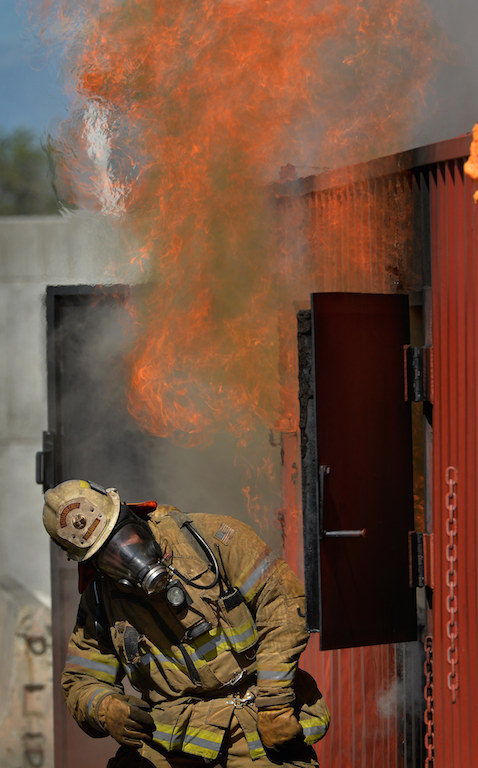
Battalion Chief Tim Adams shows firefighters how quickly flames can erupt when given oxygen during recent training to observe the flow path of a fire.
Photo by Steven Georges/Behind the Badge OC
The old thinking about how to best fight a home or other structure fire was simple: Shatter the windows and crash through the doors, thus allowing smoke and heat to escape — keeping the fire in one place — and then snuff out the monster.
Times have changed.
Now, with petrochemicals transforming most furniture into the equivalent of solid-state gasoline, home fires burn much hotter and faster than they used to when natural materials were the norm.
And this has made the job of firefighting more deadly.
“The flames follow currents of air, and the problem is, we’re crawling into (these currents),” said Anaheim Fire & Rescue Capt. Tim Sandifer.
The rate of firefighter deaths due to traumatic injuries has been on a disturbing increase over the last three decades, according to a 2010 National Fire Protection Association study.
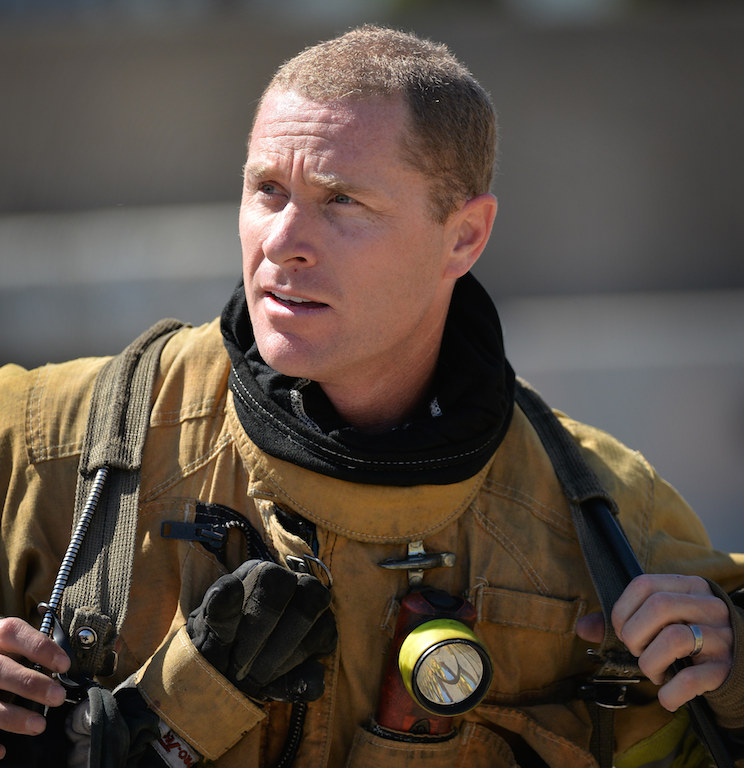
Capt. Tim Sandifer of Anaheim Fire & Rescue is a guru in the behavior of home and other “container” fires when ventilation is introduced.
Photo by Steven Georges/Behind the Badge OC
In the late 1970s, the rate of such deaths was 1.8 fatalities per 100,000 fires. In the late 2000s, the number had jumped to 3.0.
“We’re killing more firefighters per fire than we did in the past,” Sandifer notes. “This is due to the risk they take in protecting life and property every day they come to work.”
Such an alarming fact — blamed, mostly, on a petrochemical-based world and larger homes — has spurred Anaheim Fire & Rescue, and firefighting agencies throughout the country, to change the way they approach and attack home and other so-called “compartment” fires (anything with four walls and a roof).
In short, firefighters no longer immediately crash through windows and break down doors.
Because fires burn so hot and fast now, running out of oxygen faster than they run out of fuel to burn, the flames race out into such open spaces with vigor and ferocity, posing an increased risk to firefighters.
This shift in attacking structure fires is based, largely, on fire dynamic studies in 2012 by Underwriters Laboratories and the National Institute of Safety and Technology.
Results of such research have implications for homeowners and the public, too.

Battalion Chief Tim Adams, right, with firefighters outside “The Can” at the North Net Training Center in Anaheim.
Photo by Steven Georges/Behind the Badge OC
The new message is simple:
Should a fire erupt at home or in an office or another structure, when quickly exiting shut all the doors you go through.
Doing so will help contain the fire, says Sandifer and Adams of Anaheim Fire & Rescue, the agency’s top gurus on the “flow path” of a fire — the movement of heat and smoke from higher-pressure areas toward lower-pressure areas, such as open doors and windows.
***
Adams and Sandifer are in the process of training all of Anaheim Fire & Rescue’s nearly 200 firefighters tasked with suppressing blazes.
The instruction, technically called Air Track Management Training, recently began at the North Net Training Center in Anaheim and continues through April.
The training includes classroom sessions as well as sessions inside and outside The Can — also known as The Draeger, the name of the manufacturer of the shipping container that AF&R purchased and customized for live-fire training.
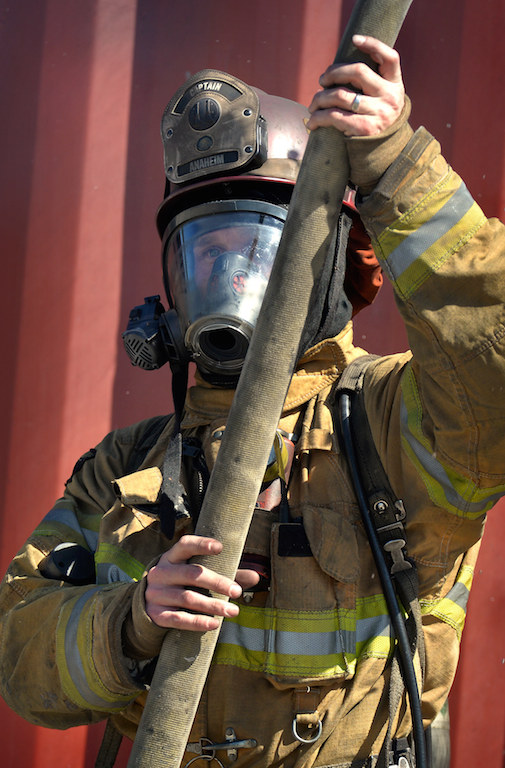
Sandifer during Air Track Management Training, which continues through April for all of Anaheim Fire & Rescue’s nearly 200 firefighters. Photo by Steven Georges/Behind the Badge OC
The fires inside The Can, fueled by typical fuels such as plywood, are meant to simulate blazes inside a bedroom — with extreme heat, high humidity, severely restricted visibility and thick smoke.
Wearing protective turnouts and breathing apparatus, firefighters take turns crouched on the inside of the container and watch the behavior of the blaze as panels and doors are opened and closed for about 15 minutes.
On a recent weekday, about a dozen firefighters from Engine 4, Truck 3 and Truck 10 — each wearing about 40 pounds of equipment — participated in the training.
“It was good — awesome,” Firefighter Jerry Woods said after a session inside The Can.
“It was very educational seeing how the smoke and fire behaved.”
Sandifer, who works out of Station 1 in downtown Anaheim, says firefighters now don’t open a door until they are ready and, hopefully, water is being applied to the fire.
And when they do, they watch what happens.
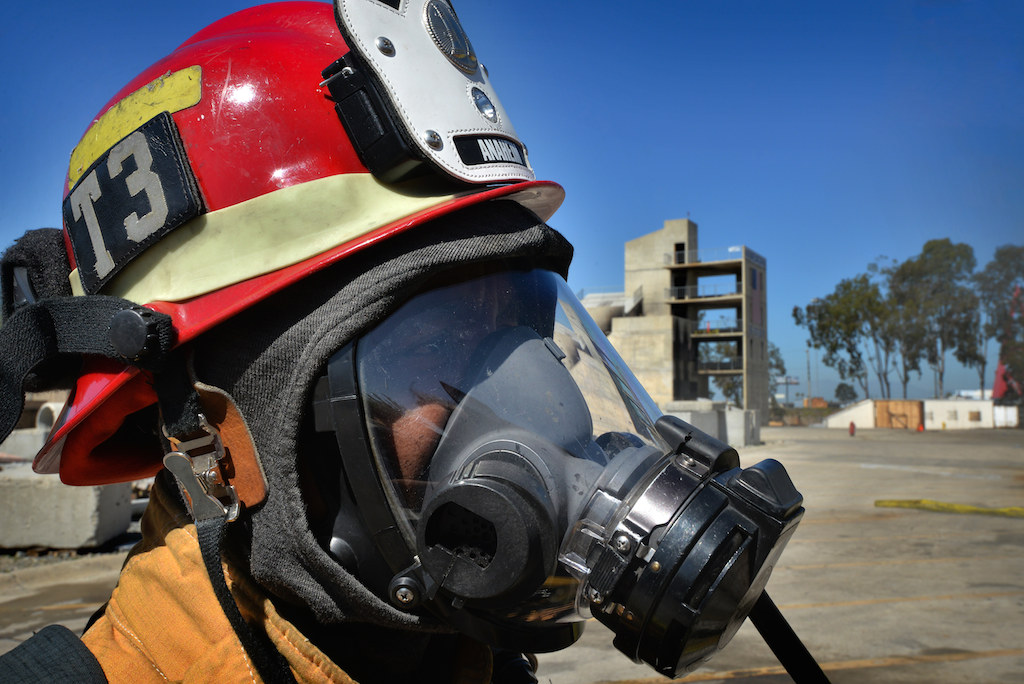
Capt. Tariq Ahmad observes the fire’s behavior from outside The Can.
Photo by Steven Georges/Behind the Badge OC
“This training really is about realizing the effects of the ventilation we create and give the fire,” Sandifer says.
After all, he says, more air means more fire.
Adds Adams: “There’s a real public safety component to all of this. We’re encouraging everyone to shut the doors behind them when leaving a home or other structure that is on fire.
“Just shut the doors. It’s a simple but potentially life-saving action.”
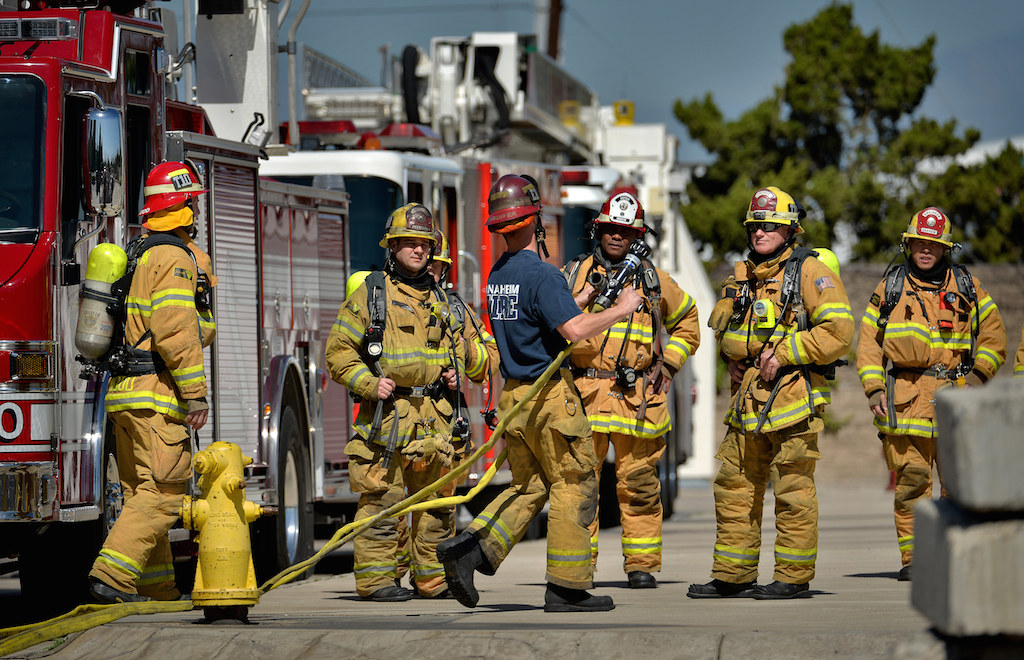
Firefighters from Anaheim Fire & Rescue suit up for fire training at the North Net Training Center on a recent Sunday.
Photo by Steven Georges/Behind the Badge OC
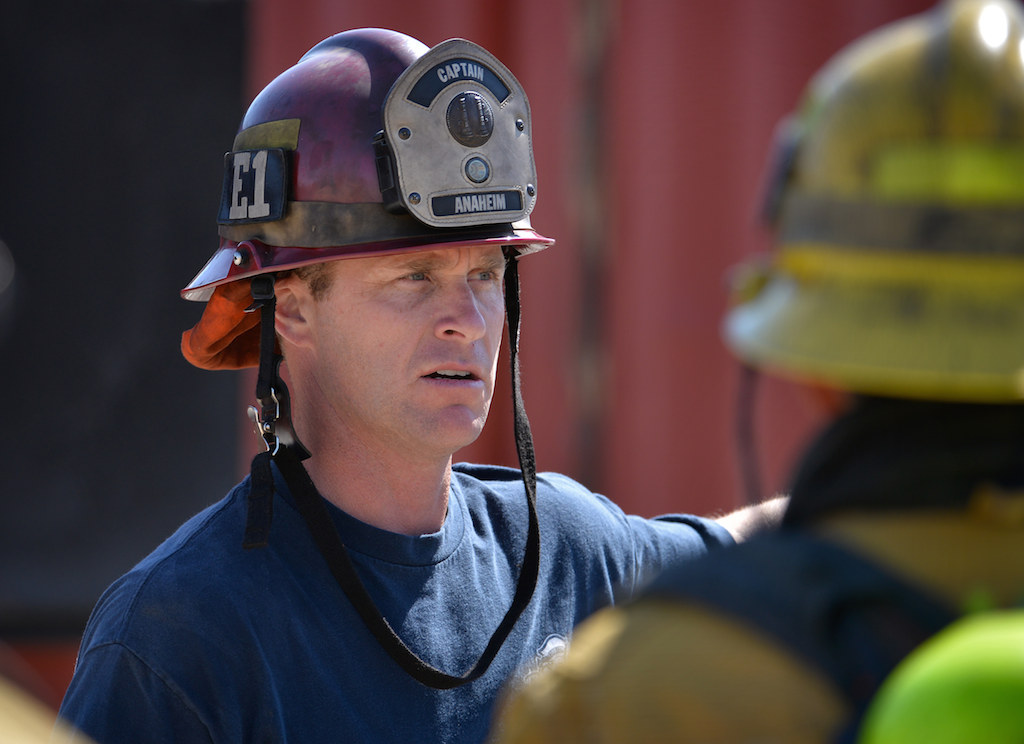
Sandifer tells firefighters what to expect during recent live-fire training.
Photo by Steven Georges/Behind the Badge OC
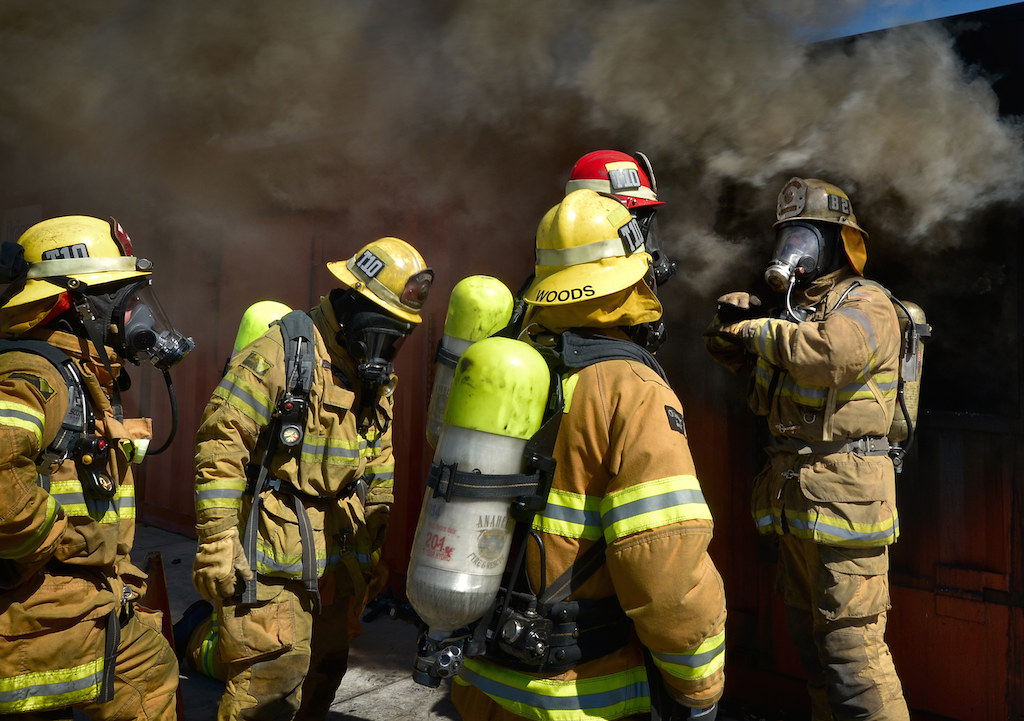
Adams and other firefighters discuss the behavior of smoke.
Photo by Steven Georges/Behind the Badge OC
 Behind the Badge
Behind the Badge


